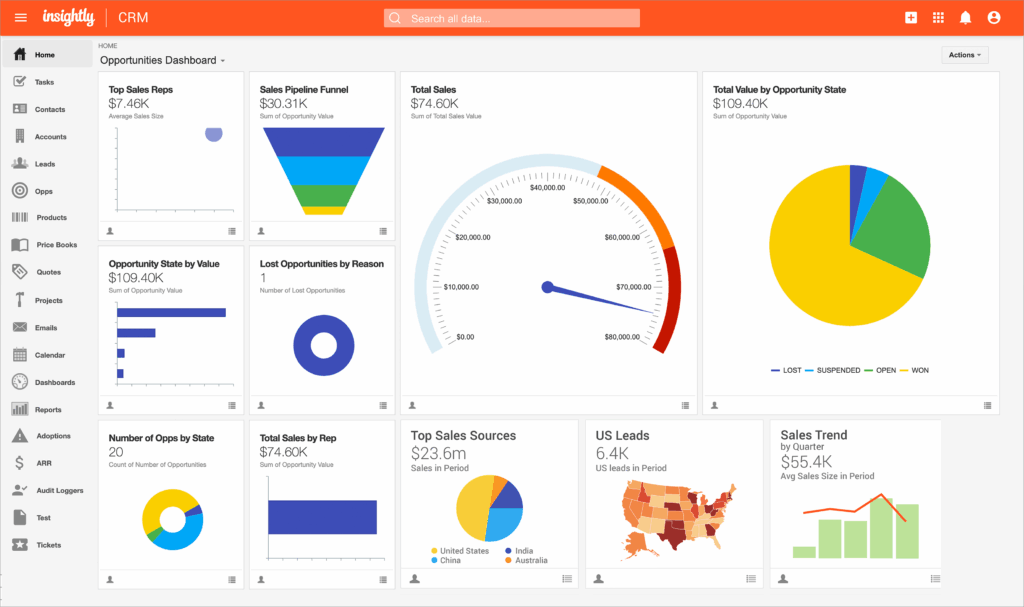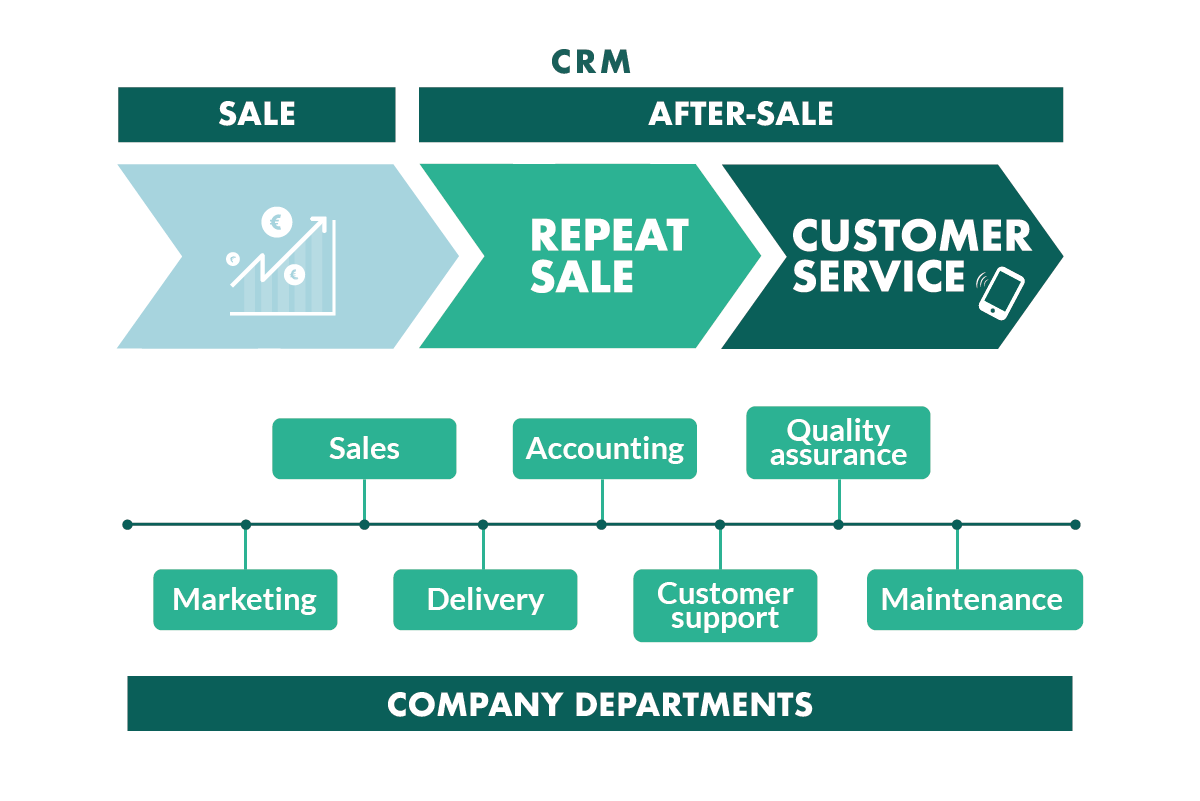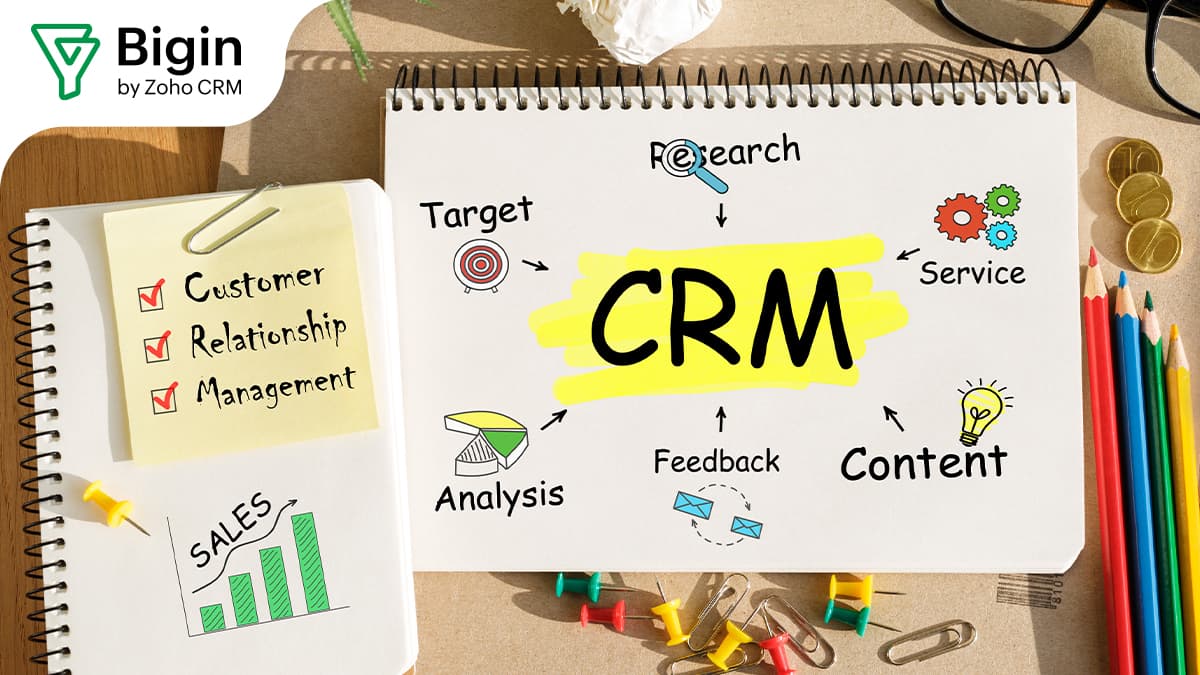
In today’s fast-paced business environment, staying ahead of the competition requires more than just hard work; it demands smart strategies. One of the most effective ways to boost your sales and marketing efforts is by leveraging the power of a Customer Relationship Management (CRM) system. But simply having a CRM isn’t enough. You need to harness its full potential, and that’s where the CRM marketing dashboard comes in. This comprehensive guide will walk you through everything you need to know about setting up a powerful CRM marketing dashboard, transforming raw data into actionable insights, and ultimately, driving significant growth for your business.
Why a CRM Marketing Dashboard is Essential
Imagine having a crystal ball that reveals the health of your marketing campaigns, the behavior of your customers, and the effectiveness of your sales strategies. A CRM marketing dashboard is essentially that crystal ball. It’s a centralized hub that presents your most crucial data in an easy-to-understand, visual format. This allows you to:
- Gain a 360-degree view of your customers: Understand their journey, preferences, and interactions with your brand.
- Track key performance indicators (KPIs): Monitor metrics like lead generation, conversion rates, customer acquisition cost (CAC), and customer lifetime value (CLTV).
- Make data-driven decisions: Base your marketing and sales strategies on concrete evidence rather than guesswork.
- Improve efficiency: Identify bottlenecks in your processes and optimize your workflows.
- Boost team collaboration: Provide a shared understanding of performance and goals across your organization.
Without a well-designed CRM marketing dashboard, you’re essentially flying blind. You’re missing out on valuable insights that can help you refine your strategies, personalize your customer interactions, and ultimately, increase your revenue. The benefits are clear, but how do you get started?
Choosing the Right CRM System
Before you can set up your dashboard, you need a solid CRM foundation. The market is flooded with CRM solutions, each with its own strengths and weaknesses. The best choice for you will depend on your specific business needs, budget, and technical expertise. Here are some of the top CRM systems to consider:
- Salesforce: A leading CRM platform known for its extensive features, customization options, and scalability. It’s a robust solution suitable for large enterprises and businesses with complex requirements.
- HubSpot CRM: A popular choice for small and medium-sized businesses (SMBs) due to its user-friendliness, free version, and integrated marketing tools. It offers a comprehensive suite of features, including marketing automation, sales pipelines, and contact management.
- Zoho CRM: A cost-effective option that provides a wide range of features, including sales force automation, marketing automation, and customer support. It’s a good fit for businesses looking for a feature-rich CRM at a reasonable price.
- Microsoft Dynamics 365: A powerful CRM platform that integrates seamlessly with other Microsoft products. It’s a great option for businesses already invested in the Microsoft ecosystem.
- Pipedrive: A sales-focused CRM that emphasizes pipeline management and deal tracking. It’s known for its simplicity and ease of use, making it ideal for sales teams.
When choosing a CRM, consider the following factors:
- Your business size and industry: Some CRMs are better suited for specific industries or company sizes.
- Your budget: CRM pricing varies significantly, so choose a solution that fits your financial constraints.
- Your technical expertise: Some CRMs require more technical knowledge to set up and manage than others.
- Integration capabilities: Ensure the CRM integrates with your existing tools, such as your email marketing platform, website analytics, and accounting software.
- Scalability: Choose a CRM that can grow with your business.
Once you’ve selected your CRM, you can move on to the exciting part: setting up your marketing dashboard!
Setting Up Your CRM Marketing Dashboard: A Step-by-Step Guide
Now that you have your CRM in place, it’s time to build your dashboard. Here’s a step-by-step guide to help you get started:
Step 1: Define Your Goals and KPIs
Before you start building your dashboard, you need to determine what you want to achieve. What are your marketing and sales objectives? What key performance indicators (KPIs) will you track to measure your progress? This is the most crucial step as it lays the foundation for everything else. Consider these questions:
- What are your overall business goals? (e.g., increase revenue, improve customer retention, expand market share)
- What are your specific marketing and sales objectives? (e.g., generate more leads, increase conversion rates, reduce customer acquisition cost)
- What KPIs will you track to measure your progress? (e.g., website traffic, lead generation, conversion rates, customer acquisition cost, customer lifetime value, sales revenue, customer satisfaction)
Examples of essential KPIs include:
- Website traffic: Track the number of visitors, page views, and bounce rate to understand how your website is performing.
- Lead generation: Monitor the number of leads generated through your website, landing pages, and other marketing channels.
- Conversion rates: Measure the percentage of leads that convert into customers at each stage of the sales funnel.
- Customer acquisition cost (CAC): Calculate the cost of acquiring a new customer.
- Customer lifetime value (CLTV): Estimate the total revenue a customer will generate over their relationship with your business.
- Sales revenue: Track the total revenue generated from sales.
- Customer satisfaction: Measure customer satisfaction through surveys and feedback.
- Marketing ROI: Calculate the return on investment for your marketing campaigns.
Once you have a clear understanding of your goals and KPIs, you can move on to the next step.
Step 2: Identify Your Data Sources
Your CRM is the central hub for your customer data, but it’s not the only source of valuable information. To create a comprehensive dashboard, you’ll need to integrate data from various sources, including:
- CRM system: This is your primary data source, containing information about your contacts, leads, opportunities, and sales activities.
- Website analytics: Tools like Google Analytics provide data on website traffic, user behavior, and conversion rates.
- Email marketing platform: Track email open rates, click-through rates, and conversion rates.
- Social media analytics: Monitor your social media engagement, reach, and performance.
- Advertising platforms: Track the performance of your paid advertising campaigns (e.g., Google Ads, Facebook Ads).
- Customer support software: Gather data on customer inquiries, issue resolution times, and customer satisfaction.
Make a list of all the data sources you need to integrate into your dashboard. This will help you ensure you have all the necessary information to track your KPIs.
Step 3: Design Your Dashboard Layout
The layout of your dashboard is crucial for its usability. It should be visually appealing, easy to navigate, and provide the information you need at a glance. Consider these factors when designing your layout:
- Prioritize key metrics: Place your most important KPIs in prominent locations, such as the top of the dashboard.
- Use clear and concise visualizations: Choose the right chart types to effectively communicate your data. (e.g., bar charts for comparisons, line charts for trends, pie charts for proportions).
- Group related metrics together: Organize your data logically to make it easier to understand.
- Use color-coding and labels: Employ color-coding to highlight trends and anomalies and use clear labels to identify each metric.
- Keep it clean and uncluttered: Avoid overwhelming your dashboard with too much information. Focus on the most important metrics.
- Consider your audience: Design your dashboard with your target audience in mind. What information do they need to see?
Many CRM systems and third-party dashboard tools offer pre-built templates that you can customize to fit your needs. This can save you time and effort in the design process.
Step 4: Connect Your Data Sources
Once you have your dashboard layout designed, it’s time to connect your data sources. Most CRM systems and dashboard tools offer integrations with popular data sources. Here’s how to connect your data:
- CRM system: Your CRM system will typically be the central data source. Connect it directly to your dashboard tool.
- Website analytics: Integrate your website analytics tool (e.g., Google Analytics) with your dashboard tool.
- Email marketing platform: Connect your email marketing platform (e.g., Mailchimp, Constant Contact) to your dashboard.
- Social media analytics: Integrate your social media analytics tools (e.g., Facebook Insights, Twitter Analytics) with your dashboard.
- Advertising platforms: Connect your advertising platforms (e.g., Google Ads, Facebook Ads) to your dashboard.
- Other data sources: Connect any other data sources you identified in Step 2.
The specific steps for connecting your data sources will vary depending on your CRM system and dashboard tool. Refer to the documentation for your tools for detailed instructions. Some integrations may require API keys or other authentication credentials.
Step 5: Create Your Reports and Visualizations
With your data sources connected, you can start creating your reports and visualizations. This is where you bring your data to life. Here’s how to do it:
- Select your KPIs: Choose the KPIs you want to track based on the goals you defined in Step 1.
- Choose the right chart types: Select the appropriate chart types to visualize your data. For example, use bar charts to compare values, line charts to show trends over time, and pie charts to represent proportions.
- Customize your visualizations: Customize your charts with labels, titles, and color-coding to make them easy to understand.
- Create reports: Create reports that summarize your data and provide insights into your performance.
- Set up alerts: Configure alerts to notify you of any significant changes in your KPIs.
Most CRM systems and dashboard tools offer a drag-and-drop interface for creating reports and visualizations. Experiment with different chart types and layouts to find what works best for you.
Step 6: Test and Refine Your Dashboard
Once you’ve built your dashboard, it’s time to test it and refine it. Make sure the data is accurate and the visualizations are clear and easy to understand. Here’s how to do it:
- Review your data: Verify that the data in your dashboard is accurate and up-to-date.
- Test your visualizations: Make sure your charts and graphs are easy to understand and effectively communicate your data.
- Gather feedback: Ask your team members to review your dashboard and provide feedback.
- Make adjustments: Based on your testing and feedback, make any necessary adjustments to your dashboard.
- Iterate: Continuously refine your dashboard based on your needs and feedback.
Your dashboard is a living document, so it’s important to review and update it regularly. As your business evolves, so will your data needs.
Advanced CRM Marketing Dashboard Strategies
Once you’ve mastered the basics of setting up a CRM marketing dashboard, you can explore more advanced strategies to maximize its impact. Here are some ideas:
- Segmentation and Personalization: Use your dashboard to segment your customer base and personalize your marketing messages.
- Predictive Analytics: Leverage predictive analytics to forecast future trends and identify potential opportunities.
- Marketing Automation: Integrate your dashboard with marketing automation tools to streamline your campaigns.
- A/B Testing: Use your dashboard to track the results of your A/B tests and optimize your marketing efforts.
- Cross-Channel Analysis: Analyze your data across multiple channels to gain a holistic view of your marketing performance.
- Real-time Dashboards: Set up real-time dashboards to monitor your KPIs in real-time and make immediate adjustments.
- Custom Dashboards for Different Teams: Create tailored dashboards for different teams (e.g., sales, marketing, customer service) to provide them with the information they need to succeed.
Best Practices for CRM Marketing Dashboard Setup
To ensure your CRM marketing dashboard is effective, follow these best practices:
- Start with the essentials: Don’t try to track everything at once. Focus on the most important KPIs first.
- Keep it simple: Avoid overwhelming your dashboard with too much information.
- Use clear and concise visualizations: Choose the right chart types and use color-coding and labels to make your data easy to understand.
- Update your dashboard regularly: Ensure your data is accurate and up-to-date.
- Review your dashboard regularly: Analyze your data and identify areas for improvement.
- Get feedback from your team: Involve your team in the dashboard design and refinement process.
- Continuously improve: Your dashboard should evolve as your business needs change.
- Prioritize Data Security: Ensure your dashboard and the underlying data are protected with appropriate security measures.
- Train Your Team: Provide training to your team on how to use and interpret the dashboard.
Troubleshooting Common CRM Dashboard Issues
Even with careful planning, you may encounter some common issues when setting up your CRM marketing dashboard. Here’s how to troubleshoot them:
- Data Accuracy Issues: If your data is inaccurate, check your data sources and integrations. Ensure your data is being pulled correctly and that there are no errors.
- Slow Performance: If your dashboard is slow, optimize your queries and visualizations. Reduce the amount of data being displayed.
- Missing Data: If you’re missing data, check your data source connections and ensure that data is being collected correctly.
- Confusing Visualizations: If your visualizations are confusing, simplify them. Use clearer labels and choose more appropriate chart types.
- Lack of Insights: If you’re not getting the insights you need, re-evaluate your KPIs and data sources. Consider adding new metrics or integrations.
- Integration Problems: If you’re having trouble integrating your data sources, check the documentation for your CRM and dashboard tools. Ensure you have the correct API keys and permissions.
- User Adoption Issues: If your team isn’t using the dashboard, make sure it’s easy to use and provides valuable information. Provide training and encourage feedback.
If you continue to experience issues, consult the documentation for your CRM and dashboard tools or seek help from a technical expert.
The Power of a Well-Designed CRM Marketing Dashboard
A well-designed CRM marketing dashboard is a powerful tool that can transform your marketing and sales efforts. By providing a clear and concise view of your performance, it empowers you to make data-driven decisions, optimize your strategies, and ultimately, drive significant growth for your business. By following the steps outlined in this guide, you can set up a CRM marketing dashboard that will help you unlock your sales potential and achieve your business goals.
Remember, setting up a CRM marketing dashboard is an ongoing process. Continuously refine your dashboard, adapt to changing business needs, and always strive to gain deeper insights from your data. With dedication and a strategic approach, you can harness the power of your CRM and propel your business to new heights.
Embrace the data, analyze the trends, and let your CRM marketing dashboard be your compass to success. The future of your marketing and sales is in your hands – start building your dashboard today!

